Via interlibrary loan from Memorial University, The Battle for the Life and Beauty of the Earth, from the minds behind A Pattern Language.
It’s the purplest book I’ve ever seen.
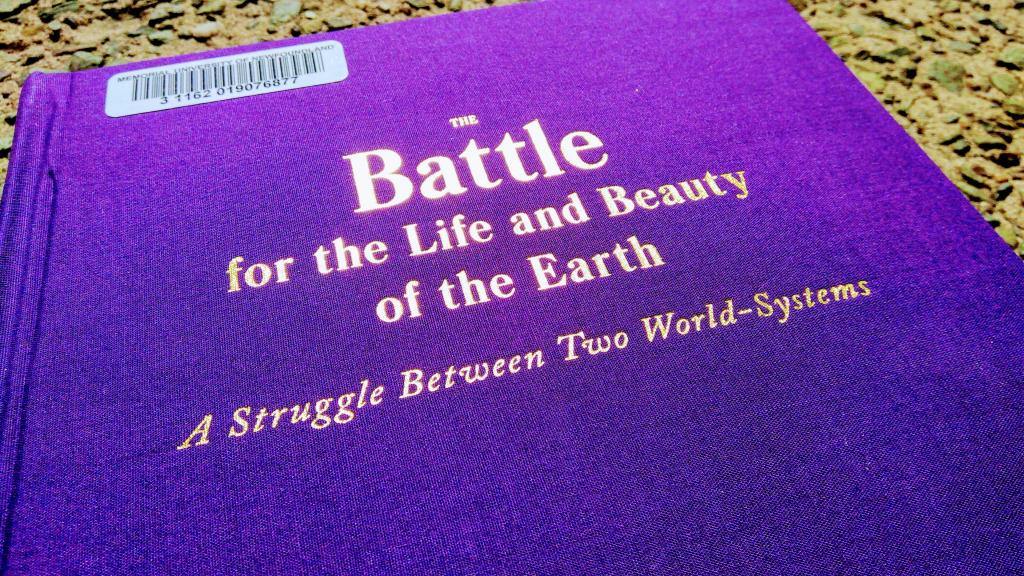
In case it has escaped your notice, Martha Wainwright is playing a two-night stint at the Trailside, Sunday night and Monday night, September 10 and 11, 2017. At this hour it appears tickets are still available.
Martha Wainwright is both a musical genius in her own right, and part of one of the richest musical veins ever mined.
A week ago Sunday I was in Cambridge, at the Massachusetts Independent Film Festival, and was delighted to hear one of her tracks used over the closing credits in the film A Longtime For Lovers, something the director seemed particularly proud of when I complimented him on his choice.
The change to see her play the intimate Trailside is a rare and special opportunity. You will not regret attending.
After spending the summer on the plaza at the Confederation Centre of the Arts, this shipping container is headed elsewhere.
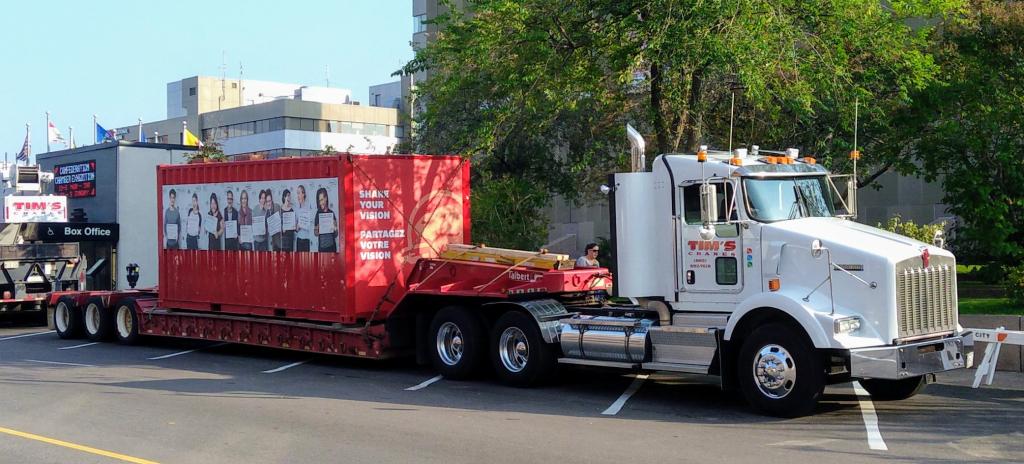
Longtime readers may recall that for a time I cultivated an interest in tales of around-the-world travel. It’s still an interest of mine (and a voyage I one day hope to make), and so I like to keep abreast of the comings and goings in the expeditionary world.
One of my favourite tales in the genre is First Overland: The Story of the Oxford and Cambridge Far Eastern Expedition, which I came across, and consumed voraciously, in 2004.
The blog post I wrote about the book back then, it being an earlier era, attracted a fascinating collection of reader comments from devotees of the expedition, and that led me to the First Overland website, maintained by Graeme Aldous, and its associated newsletter, which I signed up for and have been lapping up eagerly ever since.
In today’s issue of the newsletter came almost unbelievable news: one of the two Land Rovers that made the 36,000 mile journey, the one nicknamed “Oxford,” was found, more than 60 years on, decaying on the island of Saint Helena, an island about as far from anywhere as anywhere can be:
After the two ‘First Overland’ cars arrived back in the UK from Singapore, the Rover Company (who had only loaned them to the Expedition) used them for publicity purposes for a while. Then (doubtless when the Series 2 was on the horizon, and the Series 1 was looking obsolete) they sold off ‘Cambridge’ — more of that later — and loaned ‘Oxford’ to the British Ornithologist’s Union to take to Ascension Island in the South Atlantic as support vehicle for a centenary expedition to study the Wideawake Tern. This is covered in the book ‘Wideawake Island’ by Bernard Stonehouse (sadly no longer in print).
On the island it lost its signwriting and acquired a pale blue top coat, probably at the same time as the Expedition’s base huts were painted! When the expedition ended it wasn’t really worth the expense of shipping the car back home again, so Rover said that they could leave the car behind. I originally heard that they could sell it for a nominal amount, and post the cheque back to Rover — the story I’m hearing now is that they were to donate the car to someone who had assisted them in an important way during the previous months. Either way, it passed into the hands of Mervyn March, the water bowser driver. He was from Saint Helena — another island even more remote in the South Atlantic where Napoleon had been imprisoned. He used the car for a while (re-registered with the local number A268) until it got unreliable, and then transferred to a later ex-Cable & Wireless 88” vehicle (867). When his tour of duty on Ascension had finished in 1977, he shipped both cars back to his home, intending to use ‘Oxford’ for spares on an island where everything is precious.
Word of “Oxford’s” resting place reached those who knew of its past, and an effort was mounted to repatriate it and restore it, an effort made easier by the recent opening of an international airport on Saint Helena; the island had previously only been accessible by sea.
It’s a gripping tale that the newsletter relates the broad strokes of:
There’s not room here to tell the whole saga of getting the remains containered, and back to Yorkshire… it includes breakdowns involving both ships and cranes, and Adam will keep you enthralled for hours. As he says, the amazing part was not just that everything went so smoothly — it didn’t, but somehow each setback was swiftly overcome. On Tuesday May 9th 2017, I collected Tim Slessor from York Station, the container was opened, and for the first time in 61 years he was re-connected with the car that took him 36-thousand miles to Singapore and back. Grown men don’t cry — but Tim would admit a certain itching around the eyes when he walked into the container. I felt something similar when I touched the additional side light, raised to the wing top to clear the jerry cans on the front bumper… this was definitely ‘Oxford’. And when the car was pulled partly out of the container, and we could get round the back, the rear tent runners above the hardtop rear door were the clincher. “There’s only two cars in the world like that”, said Tim, “and the other one’s ‘Cambridge’!”
The newsletter closes with a suggestion that it will be updated with additional photos and video of the recovery; stay tuned.
As it happens, there is an Island connection to this tale–isn’t there always. Owen Jennings, a Master of Arts in Island Studies student at the University of PEI, presented a lecture titled Saint Helena: an island in flux in April, 2017. From the news release announcing the talk:
The allure of islands relies on often-inaccurate assumptions. These imaginary islands are small, remote, and—more often than not—tropical. Where most islands fall well short of that imagined island, the South Atlantic island of Saint Helena comes pretty close to the ideal. Over the past decade, this island has been gifted a new connection to the world—an airport. When it eventually opens to commercial traffic, the airport is expected to reduce travel time to and from South Africa from five days to a few hours. The Saints, as the islanders call themselves, will soon be able to travel in a way that most similar island communities take for granted. This lecture considers the experience of travelling to and being a researcher on Saint Helena, and what being a Saint might mean as the island’s connection to the rest of the world changes dramatically.
The recovery of “Oxford” is but one small example of that new reality for Saint Helena.
From a tentative “what about if we tried…” email in January, to the To Patrons letter of the 2018 edition of The Old Farmer’s Almanac in September. Made on PEI.

Just when I thought I was the last person on Earth using the word tardy–if I’m late getting back to you about something I’m as likely as not to apologize for my “tardy reply”–the Charlottetown Airport starts using it instead of “delayed” or “late” in the flight arrivals section of its website:

Well played, YYG.
Last night I watched a bit of the CBC Television evening news program The National live on YouTube.
This morning YouTube recommended that I watch a live performance by the indie rock band The National.
There is hope for we humans in our way with the AI yet.

After a hard long foggy week, we were all ready for a drive to the country yesterday, and so we piled into the car and headed to the north shore.
On the way through Wheatley River we spotted a sign for the Island Honey Wine Company; curious, we turned left onto the Millboro Road and, as promised, came across it 900 m later.
They were open, and we spent 30 minutes learning about honey wine (which is mead by another name) from Charles Lipnicki, the proprietor. Catherine tried a sample flight of their three offerings ($5, deducted from the price of an eventual purchase).
We left with a bottle of Wildflower Honey Mead along with a bottle of their honey and a bar of their soap.
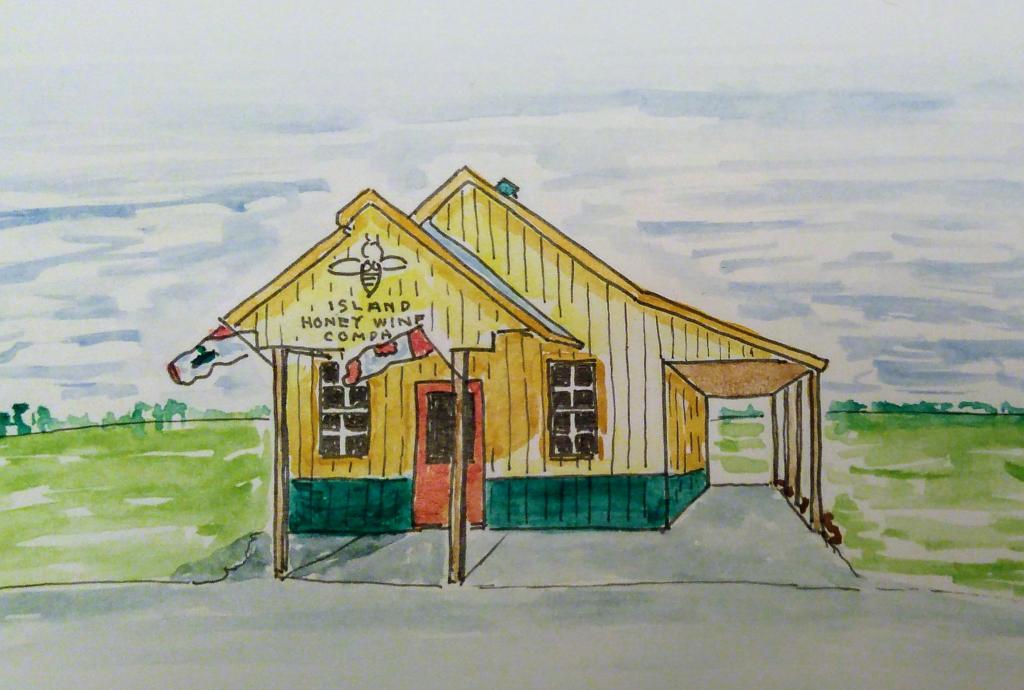
Derrick’s leaving on the 6:30 a.m. flight this morning to go back to Windsor, and Ethan knows it.
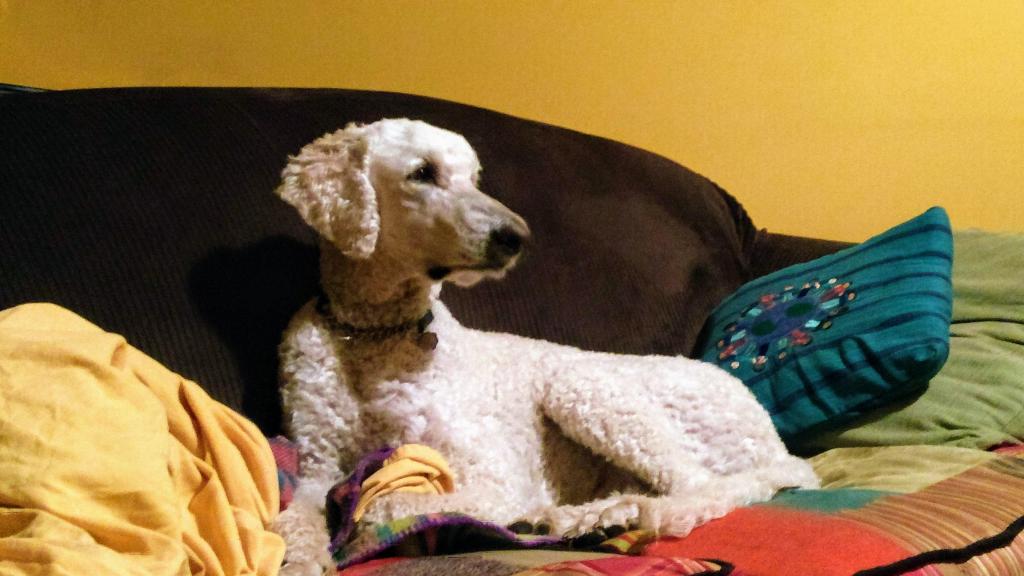
Perched high atop the Confederation Court Mall, on the edge of the food court and occupying a space variously occupied over the years by all manner of businesses, Oliver and I came across the T2 Tea Company this afternoon.
We poked our head in the door, tentatively, and were warmly greeted by the proprietor, Liwei Han.
She questioned us about our tea preferences, and when she heard that we like green tea, she guided us to some newly-arrived Zhuyeqing green tea from Emishan in China.
“Do you want to try some?” she asked.
When we said we did, she guided us over to a tea sampling area, motioned for us to sit on the two stools in front, and then brewed up a batch of the tea, carefully measuring the tea, boiling and then cooling water to 85ºC, and steeping it for 2 minutes. The tea is fascinating to watch steep: it looks like a forest of tiny green cigars.
We quite enjoyed the tea when it was ready to drink, and had three tiny cups each.
The quality of the tea, of the instruction, and of the conversation, was such that, when all was said and done, the only logical next step was to buy a tin.
It’s not cheap: $57 for a tin of 20 sachets of tea. But, then again, as each sachet can make two batches, and each batch can be steeped twice, that comes out to only 71 cents a batch.
I asked Liwen how business was doing, and she said, diplomatically, that there are many people who like tea, but many of them are not on Prince Edward Island.
If you are interested in tea, and interested in meeting someone who is obviously passionate about it, and about sharing her love with others, drop by T2 on your next trip downtown. She is open 10:00 a.m. to 5:30 p.m., Monday through Saturday.
I wanted to be sure to remember the instructions we were given for making the green tea, and for the sample of fragrant oolong “rock tea” that we were given on the way out, so as soon as we got home I sat down and sketched them out.
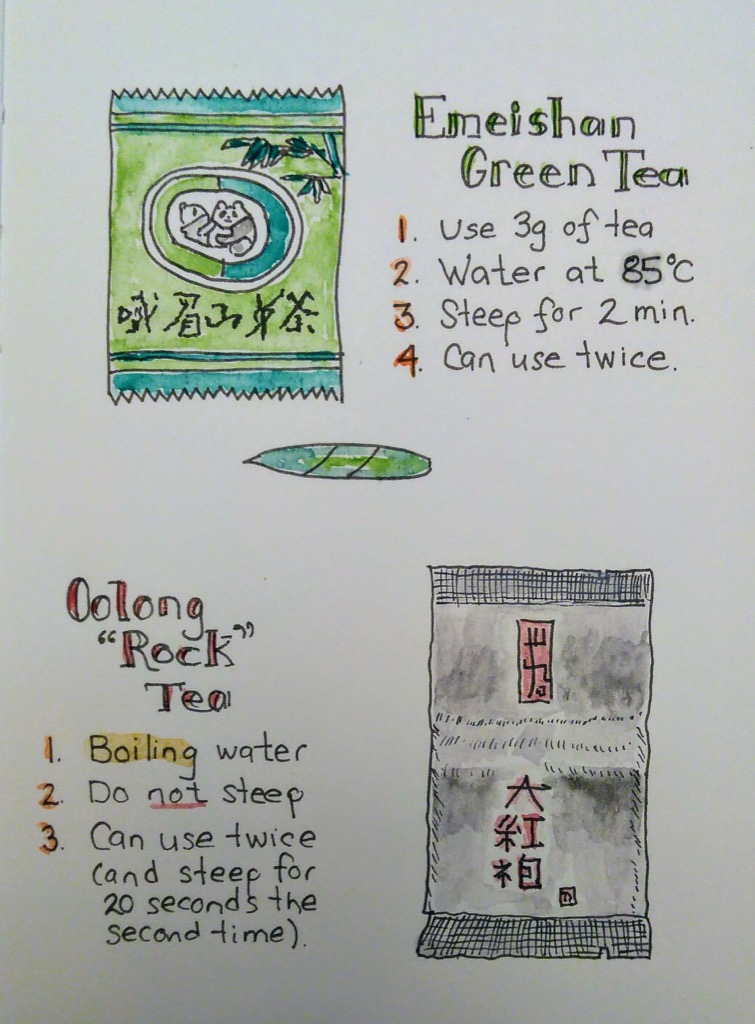
 I am
I am